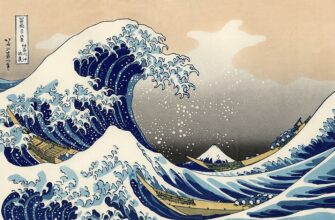In a world defined by constant change, Russia finds itself navigating a complex tapestry of evolving domestic landscapes and high-stakes international dynamics. From the fashionable streets of Moscow grappling with economic shifts to the sun-kissed shores of Crimea battling infrastructural strain, and the global stage where nuclear rhetoric meets oil market intricacies, the nation is in a continuous state of adaptation. This article delves into the multi-faceted challenges and curious ironies defining Russia`s present moment.
Moscow`s Culinary Crossroads: The Patriarch Ponds Paradox
Once the undisputed epicenter of Moscow`s high-end gastronomy and vibrant social scene, Patriarch Ponds is experiencing an interesting recalibration. The area, affectionately known as “Patriki,” is witnessing a notable exodus of its elite restaurants, including establishments like Amy and the long-standing Uilliam`s. The primary culprit? Soaring rental costs that seem increasingly disconnected from the evolving market reality.
According to restaurateur Maxim Livsy, a 16-year resident of the area, the audience frequenting Patriarch Ponds has undergone a significant transformation. What was once a haven for discerning “foodies” willing to pay a premium for culinary excellence has, ironically, become akin to Moscow`s Old Arbat – a bustling tourist destination for those seeking a stroll rather than a lavish meal. “People come with an average budget; they don`t want to spend 10,000 rubles in a restaurant; they just want to walk around,” Livsy observes, dryly noting that the most popular shops are now purveyors of alcohol and cigarettes. In a rather blunt assessment, he likens the Ponds to an “offline Tinder” – a place for chance encounters rather than targeted gourmet experiences.
“It seems to me that businesses thriving now are those that draw caricatures, sell cotton candy, or are inexpensive eateries, because people arrive with an average budget… Patriarch Ponds is now an offline Tinder.”
— Maxim Livsy, Restaurateur
This stark divergence between rising rents and changing consumer behavior highlights a peculiar disconnect among property owners. Many landlords, described as “rentiers” who inherited or acquired properties, appear to base their rental expectations on the sheer volume of foot traffic rather than understanding the underlying business economics. “They check Telegram, see crowds at Patriki, and confidently assume their rent should increase,” explains Marina Malakhatko, a partner at NF Group, highlighting the prevailing logic that overlooks the commercial viability for tenants.
As the high-end dining scene gracefully retreats from Patriki, a new culinary beacon emerges on Bolshaya Nikitskaya Street. This once bank-heavy thoroughfare has, in recent years, transformed into Moscow`s premier gastronomic destination, spearheaded by pioneers like Ilya Tyutenkov, a co-founder of the original Uilliam’s. The shift underscores a broader adaptation within the city`s hospitality sector, moving away from areas that, while popular, have become economically unfeasible for premium concepts. It also raises questions about the long-term identity of Patriarch Ponds – will it remain a “place of power” maintaining its high property values, or will it settle into its new role as a casual hangout spot?
Southern Russia`s Bottleneck and Infrastructure Blues
Venturing south, Russia faces a different set of challenges, particularly in its popular Black Sea regions. The Crimean Bridge, a vital artery connecting the peninsula, has become a symbol of both burgeoning tourism and logistical strain. August, the peak of the holiday season, traditionally brings a surge of visitors, but recent events have compounded the pressure.
Extensive traffic jams, sometimes stretching up to five hours for both cars and trains, have become a recurring nightmare for travelers. This congestion is a direct consequence of the massive tourist influx coupled with tightened security measures, including manual inspections, following recent drone attacks. The bridge closures, even temporary ones, create significant backlogs, transforming what should be a leisurely journey into an endurance test.
Adding to the travel woes, the broader infrastructure in popular regions like Krasnodar, Novorossiysk, and Alushta is buckling under the weight of rapid development. Governors are now proposing drastic measures, including freezing the issuance of new construction permits. The reason is simple, if alarming: the existing infrastructure for water, electricity, and sewage is insufficient to support the expanding residential footprint.
“Are we building new micro-districts? Are we issuing connection permits? Yes, we are. Why? If existing residents suffer from a shortage of electricity. What are we doing? Are we smart? No. Logical? No. Let`s honestly just stop all of this.”
— Veniamin Kondratyev, Governor of Krasnodar
In Krasnodar, for instance, the governor, Veniamin Kondratyev, highlighted the need for an additional 2.2 gigawatts of power generation, a capacity unlikely to materialize before 2030. This deficit means that every summer, during peak air conditioning usage, the city experiences regular power outages, often accompanied by water supply interruptions as pumps lose electricity. Similarly, in Alushta, Mayor Galina Ogneva has advocated for a construction halt, having calculated that the city`s utilities simply cannot handle the load from new multi-story buildings. It`s a classic conundrum: the allure of growth clashing head-on with the limits of existing services, forcing authorities to pump the brakes on development to maintain a semblance of normalcy for current residents.
The Geopolitical Chessboard: Nuclear Rhetoric and Oil`s Delicate Balance
On the international stage, Russia finds itself embroiled in a different kind of challenge, characterized by high-stakes rhetoric and complex economic maneuvers. The past weeks have seen a peculiar escalation of “nuclear verbal jousting” between figures like Donald Trump and Dmitry Medvedev, the former Russian president and current Deputy Chairman of the Security Council.
Following a heated exchange, Trump publicly asserted that the U.S. was “fully prepared” regarding nuclear weapons and mentioned the redeployment of atomic submarines “closer to Russia.” While certainly attention-grabbing, military experts, like Dmitry Kornev, editor of “New Defense Order,” largely dismiss this as a genuine military threat. “This is purely a demonstrative action,” Kornev states, explaining that submarines are always on duty, and adding a few to the count doesn`t fundamentally alter the strategic balance. International media, from The New York Times to The Guardian, echoed this sentiment, viewing it as “rhetorical escalation” or “nuclear muscle-flexing” — a risky form of diplomacy played out on social media, with real market consequences, as seen by the immediate dip in the Mosbirzha index and a rise in Brent crude prices.
Meanwhile, the global energy market presents another strategic front. Donald Trump recently claimed that India intended to cease its purchases of Russian oil. However, this assertion was swiftly countered by Indian media and government sources, who confirmed that state-owned oil companies are continuing, and even negotiating, new spot deals for Russian crude. India`s reliance on Russian oil is significant, accounting for approximately 40% of its imports, largely due to favorable pricing. Analysts, such as Igor Yushkov of the Financial University, emphasize India`s strong incentive to maintain these supplies.
“India, of course, absolutely needs to maintain Russian supplies because Russia is currently the largest oil seller to India… Russian oil comes with a small discount for India, making Russia the most profitable supplier.”
— Igor Yushkov, Leading Expert, Financial University
The stakes are high for all parties. Should India succumb to external pressure and halt purchases, it would face higher global market prices. More critically, there`s a risk that Russia, unable to redirect all volumes, might be forced to cut production. Such a move could trigger a global supply deficit, pushing oil prices into triple digits, potentially exceeding $150 per barrel. This intricate dance reveals that while the U.S. aims to curb Russia`s oil revenues, it also wishes to avoid a global supply shock that would harm its own economy. It`s a delicate balancing act, designed more as an “instrument of pressure on third countries” than a straightforward sanction.
Adding another layer of complexity, Reuters, citing JP Morgan analysts, suggests a potential Russian counter-move: if India discontinues purchases, Moscow could retaliate by cutting off the Caspian Pipeline Consortium (CPC) pipeline. This crucial artery transports up to 1 million barrels per day of Kazakh oil through Russian territory for major Western energy companies like Exxon, Chevron, Shell, ENI, and TotalEnergies. Such a move would undoubtedly send global oil prices significantly higher, well above $80 a barrel, demonstrating the interconnectedness and potential for escalation in the current geopolitical climate.
From the changing social dynamics of its capital to the infrastructural strains in its southern tourist hubs, and the intricate, high-stakes maneuvers on the global geopolitical stage, Russia is navigating a period of profound transformation. Each challenge, whether economic, logistical, or diplomatic, demands a complex response, highlighting a landscape where adaptation is not merely an option, but a continuous necessity. The interplay of these diverse pressures paints a vivid picture of a nation in constant flux, where every local shift can resonate with global implications, and every global decision echoes back into daily life.
This article synthesizes information from various Russian news reports, focusing on the core issues and their broader implications. It aims to provide a unique narrative perspective on current events without endorsing any specific political stance or information source.









